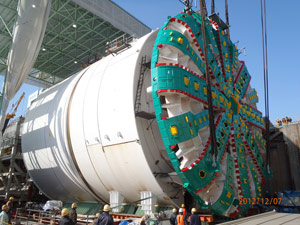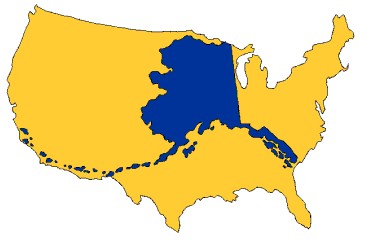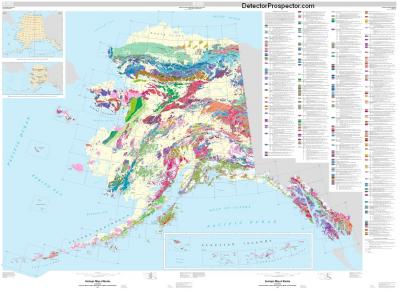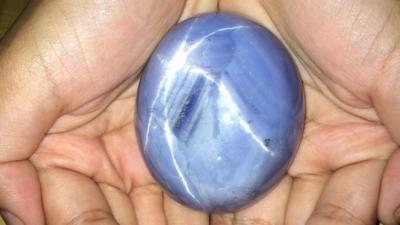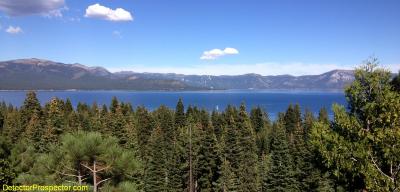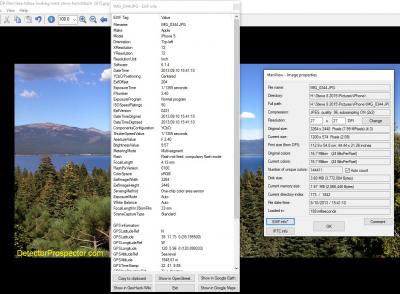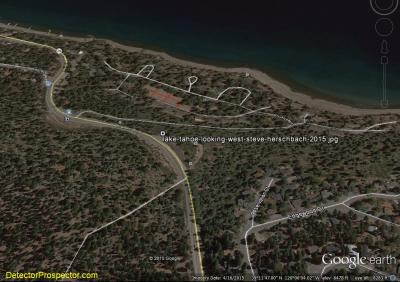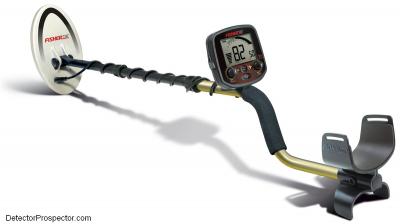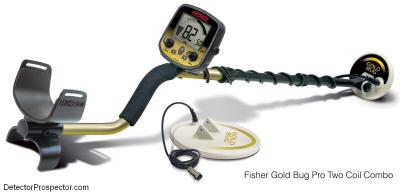-
Posts
19,687 -
Joined
-
Days Won
1,565
Content Type
Forums
Detector Prospector Home
Detector Database
Downloads
Everything posted by Steve Herschbach
-

VLF Detectors And Depth
Steve Herschbach replied to Steve Herschbach's topic in Metal Detector Advice & Comparisons
Yeah well with all due respect to Carl Moreland, Dan Geyer (may he rest in peace), John Plautz and John Earle not a thing has changed since that article was written in 2009. To get more depth from a VLF requires it to not be a classic VLF as we currently understand it. I have never said anywhere above more depth is not possible, just that is has not happened since 1990 (or earlier). I actually do think we will see something soon, but in the form of hybrid technology that blurs the lines between VLF and PI. The GPZ is just such a beast and it does get the depth, but lacking accurate discrimination raw depth has obvious limitations. -
"About 750 days after she first broke down, Bertha, the massive drill long stuck under Seattle’s waterfront, is back to work. Five stories tall and the biggest of her kind, Bertha overheated in December 2013, about a ninth of the way into digging a tunnel for an underground expressway. The contractor on the dig staged a painstaking rescue, and Bertha’s slowly drilling again." Full story at http://www.bloomberg.com/news/articles/2016-01-06/bertha-the-giant-drill-is-ready-to-rumble-in-seattle Wikipedia page on Bertha boring drill https://en.wikipedia.org/wiki/Bertha_(tunnel_boring_machine)
-

USGS Alaska Digital Geologic Map (New)
Steve Herschbach replied to AkNugget's topic in Rocks, Minerals, Gems & Geology
Remember at Alaska's size you are looking at an area one fifth the size of the United States, so this is more like regional geology - the big picture. You need other maps covering at a minimum quad scale to get more detail. Most mining districts in Alaska have maps at inch to the mile scale. Nearly all are available for free online. Interactive Alaska Geologic Map Index or in a simpler format Alaska Geologic Maps by Quadrangle For information on individual mineral deposits see the Alaska Resource Data File Finally, find all this and more on this website at Gold Prospecting Research Materials for Alaska -

USGS Alaska Digital Geologic Map (New)
Steve Herschbach replied to AkNugget's topic in Rocks, Minerals, Gems & Geology
Thanks for posting Neal. Here are both halves reduced in size and joined together as a preview. The original pdf files will let you zoom in for much greater detail. -
No worries, I left gold in the ground everywhere I went. The old timers left it for me, and I am leaving plenty for future generations.
-
"Gemologists in Sri Lanka claim that the largest blue star sapphire yet has been discovered in a mine in the country. The gemology institute in the capital Colombo has certified that the gem weighs 1404.49 carats and say they have not certified anything larger. The gem is valued at at least $100m and the current owner estimates that it could sell for up to $175m at auction." Rest of the story at http://www.bbc.com/news/world-asia-35226276
-

Security Issue - Posting Photos From GPS Enabled Devices
Steve Herschbach replied to Steve Herschbach's topic in Meet & Greet
Scott, they can't imprint GPS data without a GPS. Just take photos with a device that has no GPS if you are worried about it. -
A topic got brought up at http://www.detectorprospector.com/forum/topic/1510-awesome-day-in-the-desert-sw/?p=17706 which is so important I wanted to cover it in detail on it's own thread. There is a feature in digital photography whereby information about the photo can be encoded directly into the photo itself. This originally was just information about the photo itself including the original file name and camera setting information, date taken, etc. There are two common formats you are likely to run into - EXIF and IPTC. EXIF tends to be technical details about the photo, and IPTC is more about copyright, description, and other details useful for publishing. Details on EXIF and IPTC here. When cameras equipped with GPS became a possibility, GPS information was added to the EXIF data. This was normally just something common to phones with GPS built in but more cameras are now coming with GPS built in and more GPS units are coming with cameras built in. Activities like geotagging and such make tying location data to a photo very popular. All those photos loaded up for viewing in Google Earth? Way easier if the location data is encoded into the photo. I use a great little free program called IrfanView which is amazingly powerful and compact. The IrfanView portable version can run off a USB stick. IrfanView has a photo information tab under Image in the menu which reveals all the EXIF and IPTC information, and allows the IPTC information to be modified. You can also set options for stripping EXIF data, both on image save or via batch processing. Like I said, very powerful little program. When you display the EXIF information in IrfanView, it offers to display the photo location in Google Maps, Google Earth, and some other mapping programs. Great for photos you took but can't remember where. OK, here is a photo I took on my phone, cropped, resized, modified the brightness, and added a caption. I saved as a renamed jpg but did not toggle the checkbox that strips EXIF data. I want to show that just because an image has been modified does not mean that data gets changed. Here is the image, and then a shot from IrfanView showing the EXIF data.... Now, you could save my lake image to your computer, and open it in IrfanView and view the EXIF data, but there is an easier way. Depending on your browser you need to get the address of the first photo I posted. If you use Chrome, just right click on the photo, and choose copy image address. Or you may have to click on the photo, choose the Save option, and copy the address out of the browser window. Bottom line depending on the browser you need to get the address where the image resides online. In this case the address for the lake image is http://www.detectorprospector.com/forum/uploads/monthly_01_2016/post-1-0-57762000-1451694506.jpg If you have copied that address (again, easy way is with Chrome) now go to this website http://www.verexif.com/en/ and where it says Or paste a picture URL paste in the address of the photo and hit return. A page will pop up with the basic EXIF information, and you will see a map at the bottom of the page showing you where I took that photo!!!! Notice the site has an option for stripping EXIF information from your own photos. It gets better. If you have an iPhone or similarly equipped device it even knows the direction you are pointing the camera, and this data is also encoded. If you did download my photo and open it in IrfanView you can load the location directly to Google Earth and see where I was and which direction I was pointing the camera. In Google Earth below as loaded from IrfanView the view was looking straight to the top of the screen capture which is rather obvious since I was taking a photo of the lake. The funny part is I named the photo "looking west" and now that I see where I was and the direction of photo it was looking east. OK, lessons learned. First, just use a camera without GPS, which is what I normally do. If you use a phone or other GPS enabled device, learn where to shut the EXIF GPS recording off or just turn off the GPS when taking photos. Even then I would use IrfanView to make sure you did it right. Possibly the most dangerous thing is uploading directly from a phone as it is too easy to forget and load up location data without thinking about it. Many sites like this one resize large images and EXIF information may get stripped in the process. In fact it is easier to lose the information than retain it if you do much with the image. It is not always bad stuff to have and keeping it can be a good thing - I purposefully use EXIF and IPTC information to help insure that people copying my photos without permission might be caught using the encoded data. It really is only the GPS location data that can be a problem given the nature of prospecting. But never count on the data getting stripped by a website, be sure it is not there in the first place if you do not wish it to be. We all really like photos, myself in particular, which is why I set this forum up with generous photo display options. I sure do not want to discourage people from posting photos - I want to encourage it. But do be careful when posting photos from a GPS enabled device to be sure you are not posting more information than you intended.
-

Five Minutes To The Gold Fields
Steve Herschbach replied to strick's topic in Metal Detecting For Jewelry
I sure wish it did not get so cold in Reno this winter - you are giving me jewelry fever! -
Best part about owning a GPZ is I can no longer be tempted into buying even more coils. I had a pile of them for my GPX. Great stuff Nenad, thanks for posting!
- 11 replies
-
- 2
-

-

Cleaning Old Silver Beach Finds
Steve Herschbach replied to Swifty's topic in Metal Detecting For Coins & Relics
When I was in the UK we cleaned small silver coins by placing the coin with a bit of baking soda and water between sheets of aluminum foil and scrubbing the foil halves over the coin. Basically make an Oreo cookie, aluminum on outside and coin in middle with baking soda paste. The chemical reaction gets quite hot! But for larger silver items of bulk coins I have been wanting to try the boil it in aluminum container method as described at http://www.apartmenttherapy.com/how-to-clean-silver-131048 You can also put strips of aluminum in a stainless steel container and boil as at http://m.wikihow.com/Clean-Sterling-Silver-with-Baking-Soda-and-Aluminum I have some silver coins with very dark tarnish - I will give it a try and report back. -

My New Years Resolution
Steve Herschbach replied to Steve Herschbach's topic in Metal Detector Advice & Comparisons
Well, I wish I had a really good reason for you Peter. The fact is I really like the CTX as just a great all around metal detector. The problem for me was it just ran out of its three year warranty and I had hardly used it at all in those three years. I spend 90% of my time nugget detecting. Since I have a GPZ already I figured my Minelab slot was full so let the CTX go. It has been over three years since it came out so a next version CTX will come along one of these days. In the meantime I have the DEUS and others to keep me busy. DEUS vs CTX big difference obviously in the weight. On the other hand CTX is submersible. The DEUS excels at pulling non-ferrous out of ferrous trash, but is not so hot at working modern trash. The CTX has superb target id capabilities and is an excellent machine for working dense modern trash. The DEUS was made for ancient sites and digging all non-ferrous. The CTX lineage comes more from working urban park settings. The CTX is also hands down the better beach machine. For the differences in more detail see http://www.detectorprospector.com/forum/topic/1378-european-detectors-versus-us-style-detectors-on-target-masking/ -
Any good VLF with good iron disc will work. The White's MXT is particularly well proven in this particular regard. I personally think the Gold Racer would also be a good choice - my choice at the moment anyway, with the large coil. The bottom line however is the Gold Racer is an unproven machine so a bit more risk going that way as opposed to something like the MXT which has proven over and over to be a good tailing pile machine. I am not pushing the MXT per se, just highlighting the difference between tried and true compared to new and unproven. Do keep in mind nobody hunts cobble piles looking for small gold, so just about any good nugget hunting VLF will do the trick. Steve's Guide To Gold Nugget Detectors I would normally use a larger coil for tailing piles but it is funny to note Gerry using Gold Bug 2 with 6" coil and making this find. I did well at Moore Creek with the Gold Bug 2 and 6" coil because the small coil could better see between the dense hot rocks that caused masking issues with the larger coil.
-
Well alright, congratulations Gerry! The GB2 is an awesome tailing pile hunter for a couple reasons. The light weight, hip or chest mount design is one reason for sure. The other is the crazy simple iron disc mode. Just cover ground and dig sweet beeps, nothing to it. And less likely to make you walk away from big nugget because iron disc makes a nice squeaky nugget sound on stuff that would overload on a lot of other detectors. There is some big gold in tailings in Idaho but one less now!
-
I am pretty happy with 2015 looking back so not a whole lot different I plan on doing for 2016. Hopefully more detecting days. The main resolution for the new year however is a rule to keep a lid on my detector collection. So in 2016 I am only allowed one model from each of the manufacturers at any one time. And before I can get a replacement the existing one has to get sold first. I worked on getting there this year and ended the year where I need to be. The CTX sale (thanks Rob!) at the last second got me to my goal. Fisher F75 Ltd2 Garrett ATX Makro Gold Racer Minelab GPZ 7000 Nokta FORS Gold+ White's V3i XP DEUS Out of those I am going to sell the Nokta FORS Gold+ soon as being extraneous to my needs and will wait for the Nokta Impact instead. The F75 I may replace with the F19 or maybe just wait for whatever it is new that Fisher has cooking right now. So my core units starting out for 2016 are the ATX, Gold Racer, GPZ 7000, V3i, and Deus. I can't honestly say I NEED even this many detectors, but part of the game for me is checking out what new stuff comes along. This rule lets me keep doing that but will prevent me going crazy and loading up with stuff I really do not need. After all, I can only use one at a time, and there is only so much time in every year to go detecting. In any given year just two or three of my detectors see any serious hours of use. I would be happy to do as well on jewelry and gold nuggets in 2016 as I did in 2015 so the only area I want to focus on a bit more is putting myself on sites where gold coins might be found. Another reason why I got another Deus - for hunting old camps and other habitations from days of old.
-
Yes, they are the same coil except for the decal, so there are two different part numbers depending on the decal you want. However if you want the 5" coil for the F19 you have to get the one with the Gold Bug decal. Go figure. From Fisher Search Coils page : F19 5” DD Round White Coil-Item 5COIL-GBUG $159.00 10" DD White Elliptical Closed Coil - Item 10COILDD-FRL $179.00 11"DD Elliptical Open Coil - Item 11COIL-F5F $199.00 Gold Bug / Pro / DP 5” DD Round White Coil-Item 5COIL-GBUG $159.00 10” Solid DD White Elliptical Coil-Item 10COILDD-GB $179.00 11” DD Bi-Axial Black Coil-Item 11COIL-GB $199.00 I have been holding out for the black & white F19 for some time. I am seriously considering selling my F75 to get an F19 instead.
-
Early on in discussions with Minelab about the weight of the GPZ I complained mightily. I figure we have to keep beating that ergonomics drum no matter what. But when it got down to it I told them that they could put small spikes inside the armrest. I would be in constant pain and bleeding all over the place, but if it meant getting better performance I would do it. I think that pretty much sums up the situation for a lot of us, and the people who truly are wanting those big nuggets down deeper (if they exist) are really wanting that larger coil, no matter what it adds in weight. I admit personally to more wanting the smaller coil for working in and around sagebrush and large rocks. Being able to get GPZ power into locations where only less powerful machines with smaller coils have gone before would likely get me more gold than a larger coil. I do still think the SDC has the tiniest of edges still for both small gold plus easier pinpointing, both together making it attractive still compared to a GPZ. Both are directly related to the smaller coil on the SDC. I believe a smaller coil on the GPZ would not only equal but exceed the SDC for sheer tiny gold sensitivity. But I am willing to give the Aussies their due and acknowledge their need for a large coil probably exceeds my need for a small coil so it is ok with me if they get their wish first.
-
It is a shame there are few women who give metal detecting a good go. I think if they could get past the "playing in the dirt with the boys" aspect that women in general would make better detectorists than a lot of men. Patience and attention to detail goes a long way in metal detecting and prospecting, and women often have the edge there compared to us attention deficit guys. Anyway, congratulations and a big hello to Robin. And Rick, you really are a Lucky Lundy!
-
As Swifty points out there are various Gold Bugs as described at Differences in Gold Bug Versions Since Owen is talking about buying one with a 5" coil we can assume he is not talking about the "old" Gold Bug but a new model. The Gold Bug Pro with 5" coil normally sells for $649 Almost all Gold Bugs sold new come with a 5" coil so demand for the 5" coil alone second hand would be minimal. A used one just sold on eBay for $42 which less fees and shipping leaves not much. You could post it free here in the classifieds and maybe get around $50 for it eventually. Best bet if you want the 10" is to buy the Gold Bug Pro dual coil package for $749 then sell the 5". Don't buy the model with 5", sell the 5" and get the 10" - it will end up costing you more (the 10" coil alone is $152). If it were me I would look very hard at just getting the F19 instead as Ray has mentioned. Basically a Gold Bug with extra features and comes with 10" coil and also for $749. Fisher F19 Finally Available in Gold & Black But getting the Gold Bug dual package and selling the 5" would be the lowest dollar way of getting into a Gold Bug with 10" coil. Figure F19 at $749 and Gold Bug Pro dual coil at $749 less maybe $49 for 5" coil if you sell it so $700? Not much difference. Or Fisher could just sell the Gold Bug Pro with 10" x 5" stock since many people want it that way. But why do what customers want?
-

Minelab Bundles GPX 4500 and SDC 2300
Steve Herschbach replied to Jim Taylor's topic in Minelab Metal Detectors
Oops, my bad Jim, sorry about that. There never was an official 4800/2300 bundle from Minelab so I did not notice exactly what you were asking. Rob pretty much covered it but basically if you were looking for somebody to substitute out a 4800 for the 4500 in the deal you would need to call around fast. Seems like dealers would jump on that as it is easier to move a 4500 than a 4800. -

Minelab Bundles GPX 4500 and SDC 2300
Steve Herschbach replied to Jim Taylor's topic in Minelab Metal Detectors
Look up two posts before yours on this thread. Two more days! -
Why would I boot you? I only ask that people be honest and respectful and you are being both. Hopefully my post was not seen as disrespectful to you or others because it could come across that way, and that was not my intent. It is rather obvious many people are seeing the increases in performance and some are not. That is what "up to" means. It does not mean absolute under all conditions everywhere. It means some places yes and some places no, and to varying degrees. It sounds like you wanted and expected 40% across the board, but nobody including Minelab ever said that was what you would get. Yes, I advise reading the small print, and better yet waiting 6 months or a year before buying any new model detector. Let other people sort it out then decide whether to lay out the bucks. Oh well, it is what it is, and pretty much water under the bridge at this point. Some are happy, some are not, and others in between. As you noted, most people in the world have far more serious issues to deal with. Happy New Year to you Dave!
-
Hello Jay, welcome to the forum! It was all so predictable. When at the Minelab Conference for the announcement of the GPZ 7000, I told all present that the 40% thing was going to cause them issues if not explained and even then problems were going to happen. The problem is simple. People hear what they want to hear. No matter how many times you explain that "up to 40%" means anything from exactly the same and up to 40% in a matter of degrees, people refuse to see it. People like black and white results, blanket declarations, and minds latch onto best case scenarios. I learned this best running a service department. If I have your broken item in for service, you will probably ask when it will be done. I might answer "oh, five to ten days". Well, I just shot myself in the foot. You heard 5 days and will forget the 10 days part. In five days you will be on my doorstep wanting your item, and in seven days you be irate it is not done yet. People will always discount what they do not want to hear in favor of what they want to hear. Now, the fact is Minelab could have used evidence I had in hand to claim "up to 400%" but they wisely kept with more realistic figures. The GPZ can out detect a GPX by many orders of magnitude on the right specimen gold, and as long as you can prove it as fact, it is perfectly legal and allowable in advertising to quote best case figures. Gas mileage numbers are famous for it. Can you imagine the outcry if Minelab had gone with "up to 400%"? It is obvious the GPZ advantage depends on the type of gold and the nature of the ground itself. In some places the difference is very dramatic, and I have seen it myself. In other places on nice solid gold, there is little or no advantage. In fact, if you look at the scatter chart below, in the lower left there are four results basically at or below 0% improvement! There is nothing in these examples that attempts to define how common the various results might be, and it is likely that in some places there is little or no advantage with a GPZ versus a GPX with the proper coil/timing combo. So I get it that there are people out there that are not seeing a dramatic difference where they are at and are somehow concluding therefore that the advertising was misleading. Again however, it is people simply refusing to read and understand what is being presented in its totality. The last article I wrote up about the new Makro Gold Racer I went to great lengths to not "hype" the product. I found that lacking hype people will create it for themselves. Everyone wants to believe the latest new thing is somehow going to work magic for them. Minelab is interesting because they always also have a contingent of people who want to trash each new product as being worthless. Everything that has happened with the GPZ happened with the SDC, the GPX series, and the GP series before that. The GPX 5000 that everyone now says is unparalleled was reviled on release as being an over hyped bit of Minelab nonsense. Same with the SDC 2300. Check out the SDC 2300 thread at http://www.detectorprospector.com/forum/topic/302-minelab-sdc-2300-my-detector-would-have-found-that/ I almost immediately ditched both my GPX 5000 and SDC 2300 and do not regret it one second. My reasoning was and is simple. I want one detector with one coil that has my best chance on a single pass over the ground of getting a positive response on the widest range of possible gold targets in the ground. I do not want to go over and over the same ground with multiple coils and multiple timings trying for a best result. I want the best possible shot on the first go and as of this moment I still believe the GPZ 7000 is giving me that best across the board performance on a gold nugget of any size or composition. Of course, in specific situations and with specific budgets there are many possible solutions to peoples prospecting needs. The GPZ is not the be all and end all of prospecting detectors or everything else would be ceasing production, and that is not happening. For a recap of reasons not to buy a GPZ 7000 visit http://www.detectorprospector.com/forum/topic/725-reasons-not-to-get-a-minelab-gpz-7000/ from March 2015. Here, let me quote myself from that post "So you have a GPX 5000 (for example) which you know inside and out and you have a full set of coils and other accessories. You have that setup dialed to perfection. Do you need a GPZ 7000? Of course not. Honestly, that is just silly. The GPX 5000 in my opinion at this time still represents the best value in pulse induction prospecting detectors. The model has a solid history as a performer and nothing has changed overnight." Anyone thinking the GPZ 7000 made the GPX 5000 obsolete simply has not been paying attention, or hearing what they want to hear.


